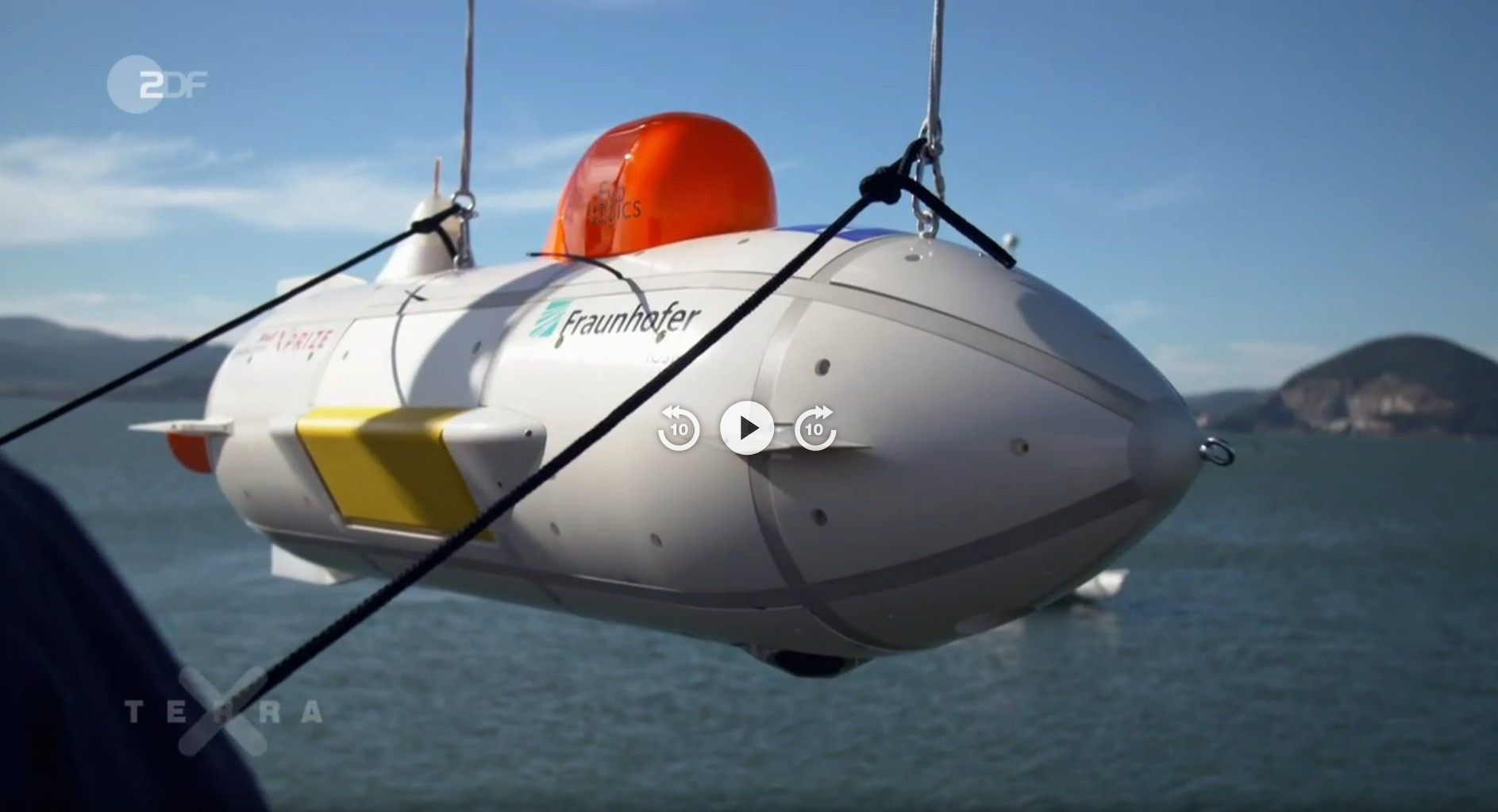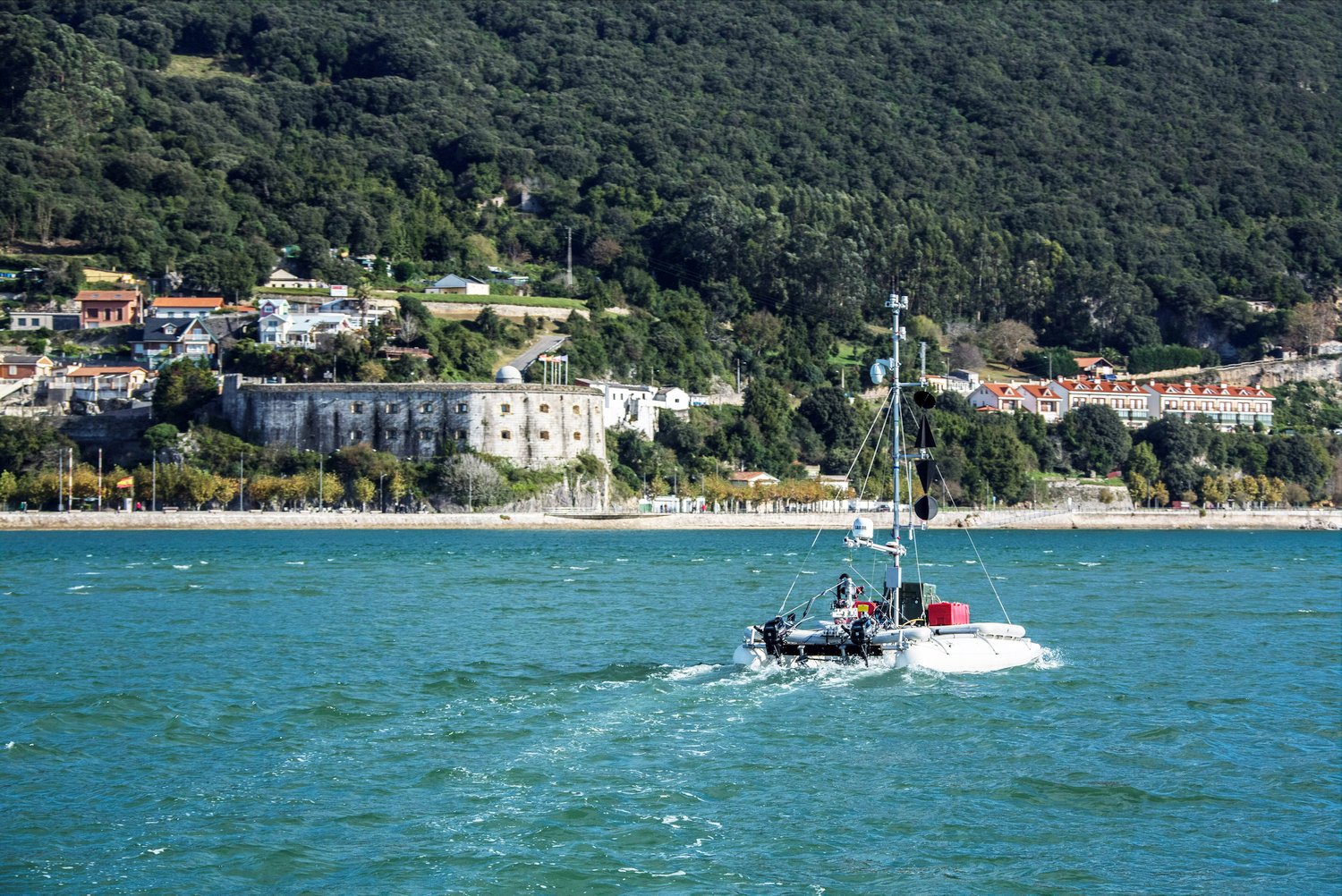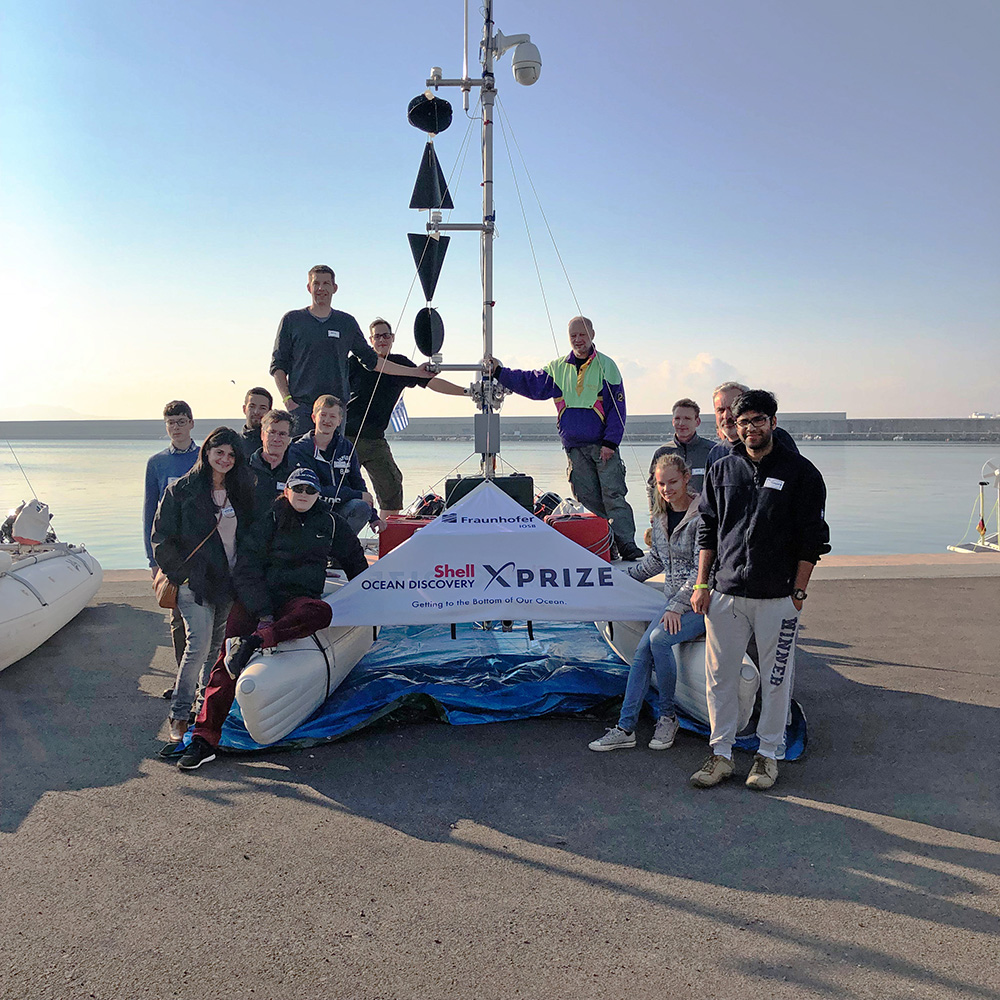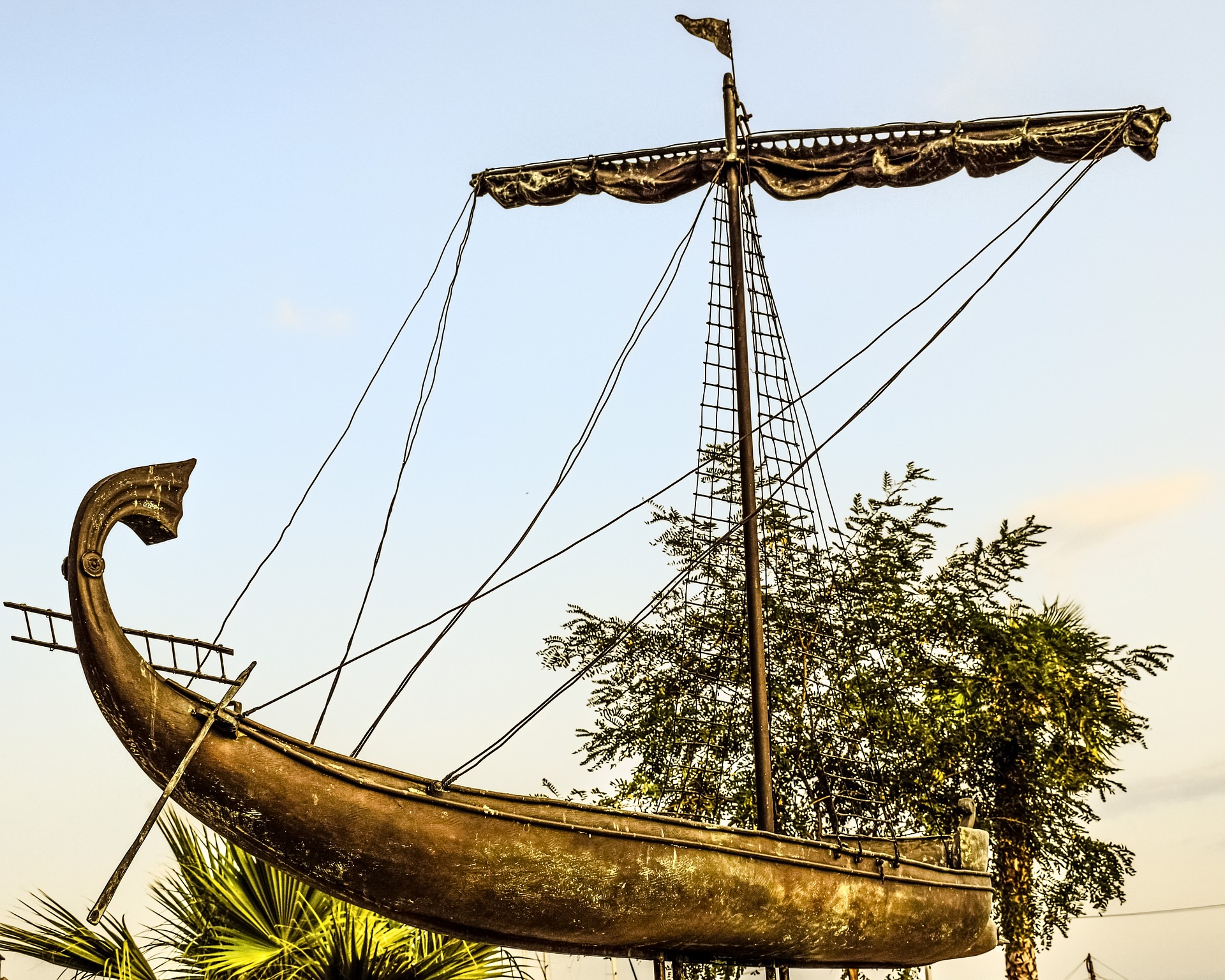
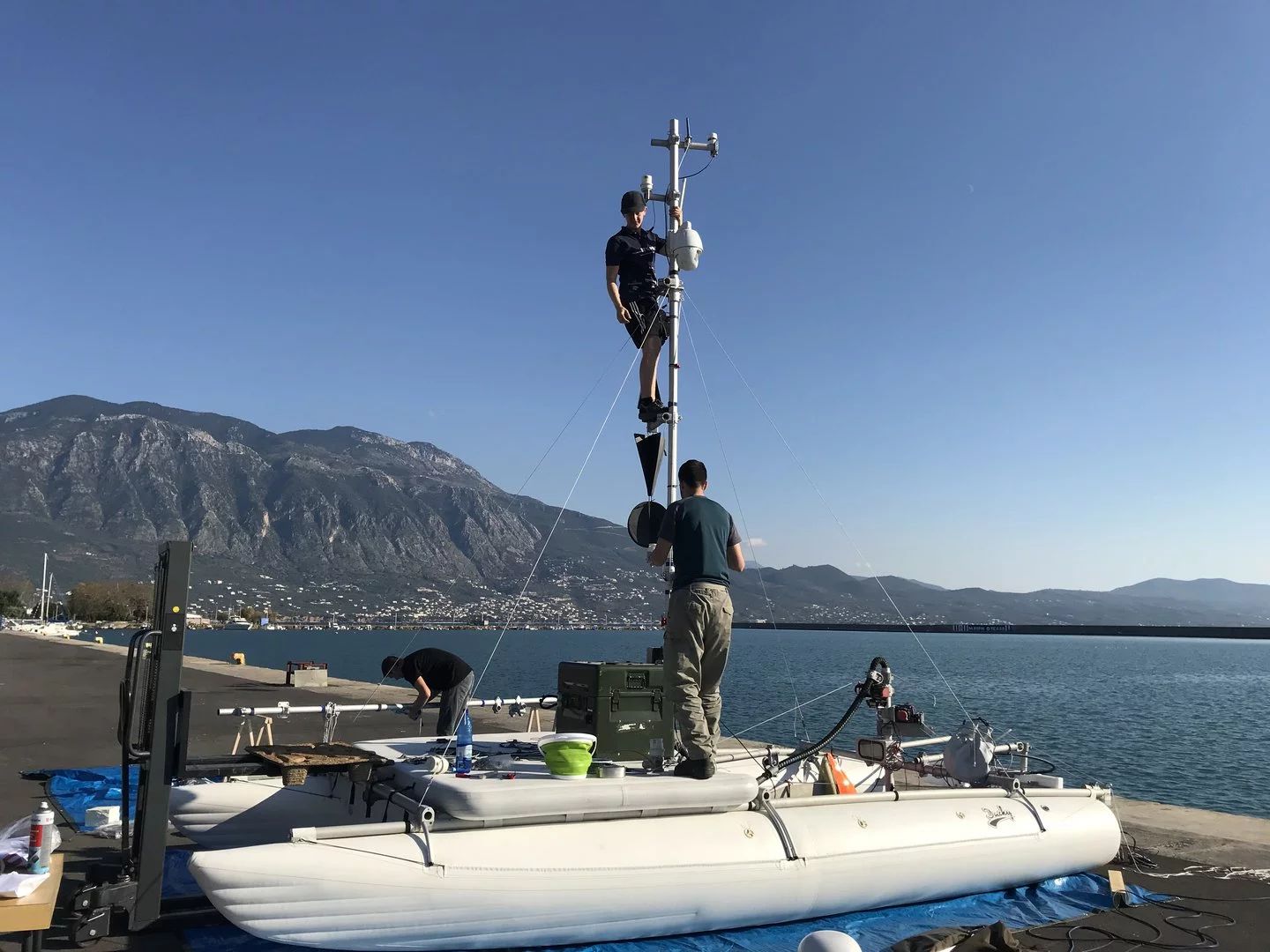
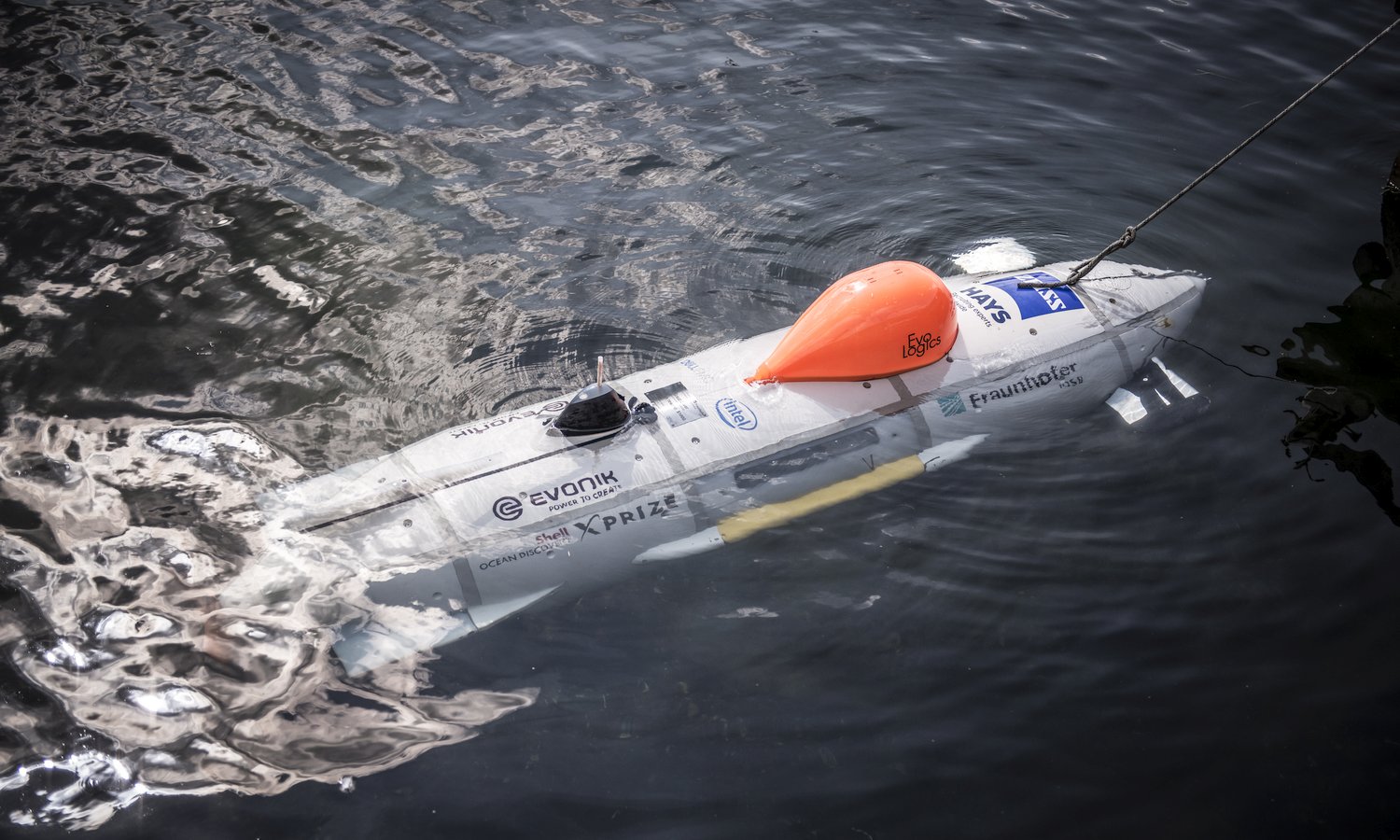
Short description of the project
Behind the project name "Arggonauts" lies the development of unnamed, autonomous submersibles. For this purpose, the Fraunhofer IOSB team presented five unmanned surface vehicles based on inflatable catamarans, so-called "Water Striders", as well as 2.60 metre long diving drones, nicknamed "Great Drivers", as part of the worldwide technology competition for deep-sea mapping "Shell Ocean Dicovery XPrice". The electrically powered catamarans can transport the submarines, which are also electrically powered, to an operation site up to 90km from land, where the "Great Drivers" descend independently. Here, the Great Divers survey the seabed by communicating with the surface vehicles via sound waves. The Water Drivers, in turn, obtain their information from GPS signals from space, which they convert into acoustic signals. The submersibles use these signals to orient themselves and navigate the geo-position. The seabed is scanned by means of a high-resolution sonar from a distance of about 80 metres.
Project goals
To date, only about 5 per cent of the deep sea (the oceans beyond a depth of 1000 metres) has been explored, despite the fact that over 60 per cent of the Earth is covered by water that has an impact on our lives. In the oceans, CO2 and methane hydrate are released and stored, and submarine trenches, canyons, hills and mountain peaks affect the course of currents. The research vessels used so far have the disadvantage of being large, cumbersome, dependent on human crews and therefore costly. The aim of the project is therefore to map the seabed in high resolution using a low-cost and autonomous technology. The extended benefits of a technology like Arggonauts are research into the impact of the deep sea on the CO2 budget as well as environmental and species protection.
Project outcome
The Arggonauts team at Fraunhofer IOSB has succeeded in developing tandems of lightweight autonomous surface vehicles and torpedo-shaped diving drones that operate in a swarm. This development made it possible to carry out high-resolution surveys of the ocean floor at a depth of 4000 metres and to take photos of objects such as shipwrecks. The successful participation in the Shell Ocean Discovery XPRIZE research competition (2016-2018) was an important milestone in the field of mobile, autonomous systems in hostile environments. The "Arggonauts" were the only German team out of 32 to make it into the top five.
 Fraunhofer Institute of Optronics, System Technologies and Image Exploitation IOSB
Fraunhofer Institute of Optronics, System Technologies and Image Exploitation IOSB 
